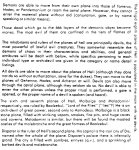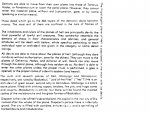Imaro
Legend
What is the goalpost shifting? It's simply not true that D&D (eg Holmes, Moldvay, Mentzer, even RC) have significantly different lore from AD&D.
I already posted the differences... are you saying those aren't true? Or are you saying an entirely different cosmology, totally different monsters and some monsters that exist between the two but have different backgrounds/descriptions doesn't count as different lore? If so I'm confused on what would?
EDIT: As to @Hussar's example,... I already admitted I was mistaken (which is more than some posters seem capable of doing in this thread) if he wants to compare them he can I was saying for my purposes, they are two separate games and his argument would not be furthered with me by using the D&D as opposed to AD&D comparison. You think it's a fair comparison, then more power to you because you are definitely entitled to your opinion... but I'm not going to get into a long drawn out back and forth with you when the company who produced the games considered them separate games and I've given plenty of examples of differing lore (I mean you just claimed the lore was different...with the gnoll example but now it's not different enough or something??).
Last edited:



